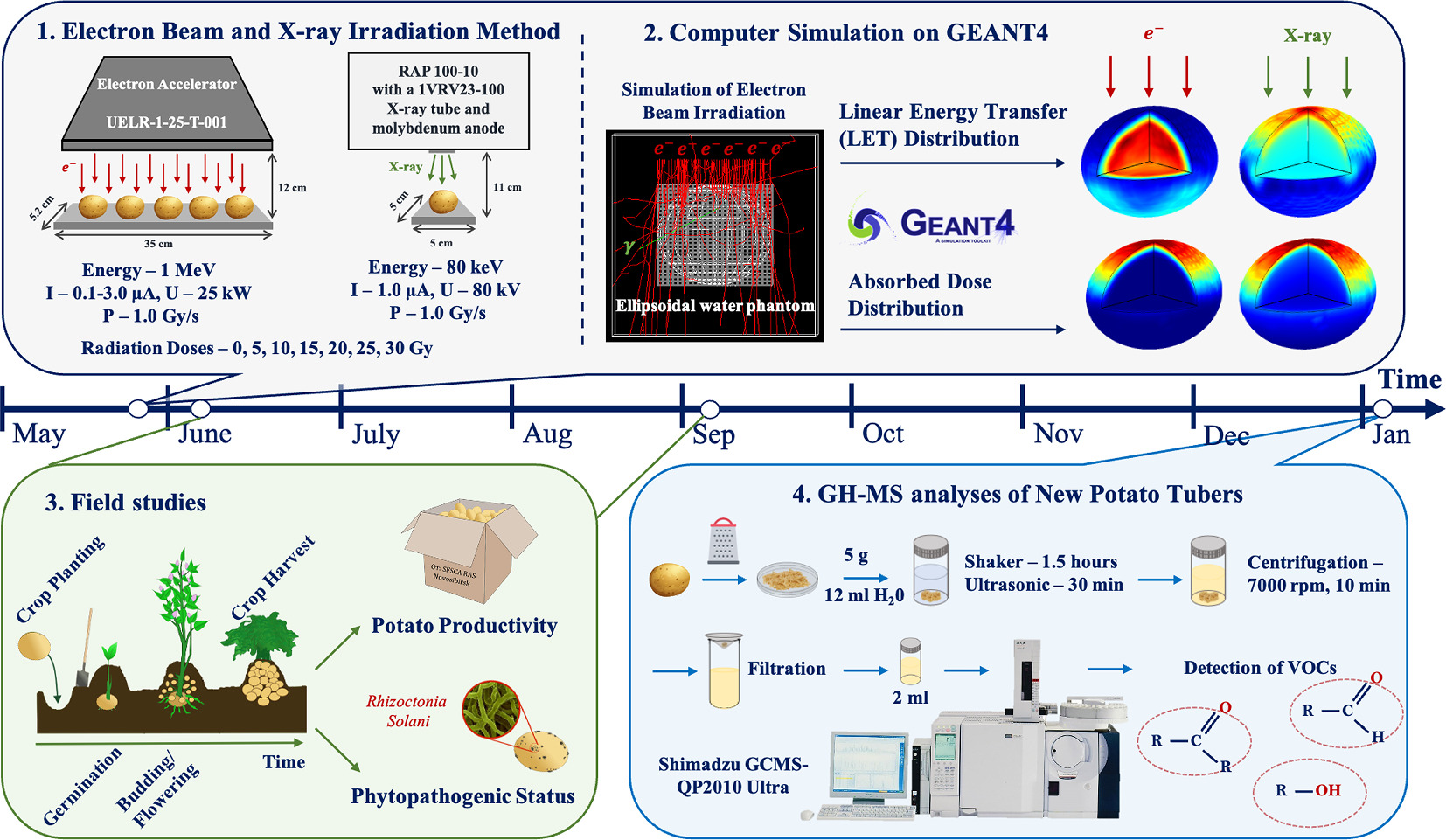https://doi.org/10.1140/epjs/s11734-025-01693-x
Regular Article
Comparing the impact of pre-planting irradiation with electron beam and X-rays on potato tuber yield and quality
1
Siberian Federal Scientific Center of Agro-Biotechnologies, Russian Academy of Sciences, Novosibirsk Oblast, 630501, Krasnoobsk, Russian Federation
2
Skobeltsyn Institute of Nuclear Physics, Moscow State University, 119991, Moscow, Russian Federation
3
Faculty of Physics, Moscow State University, 119991, Moscow, Russian Federation
4
Faculty of Chemistry, Moscow State University, 119991, Moscow, Russian Federation
5
Department of Medical and Biological Physics, Institute of Digital Biodesign and Modeling of Living Systems, Sechenov First Moscow State Medical University (Sechenov University), 119435, Moscow, Russian Federation
6
Department of Organization of Medical Provision and Pharmacoeconomics, Sechenov First Moscow State Medical University (Sechenov University), 119435, Moscow, Russian Federation
7
Department of Epidemiology and Evidence-Based Medicine, Sechenov First Moscow State Medical University (Sechenov University), 119435, Moscow, Russian Federation
Received:
4
September
2024
Accepted:
12
May
2025
Published online:
30
May
2025
This paper studies the impact of low-energy accelerated electrons and X-rays on the potato crop yield, phytopathogenic status and chemical composition of potatoes grown from two seed potato varieties to enhance the reliability of pre-sowing irradiation methods of seed potatoes. The objects of the study—Fioletovy potato variety and Gala potato variety, commonly grown in Russia—were selected as they have different chemical composition and depth of sprouts which can potentially affect the result of irradiation. During the research, Fioletovy potato variety responded to X-ray irradiation by suppression of fungal disease, while electron beam irradiation increased the Fioletovy potato yield up to 1.5 times. Computer simulation of dose and linear energy transfer (LET) distribution in potatoes using Geant 4 toolkit revealed the correlation between the amount of low-energy electrons with high LET values hitting the internal potato layers and an increase in the potato yield. It has also been found that a great amount of low-energy electrons with high LET values in the surface potato layers cause an effective suppression of fungi in potatoes. Pre-planting irradiation of Gala potato variety with either accelerated electrons or X-rays, however, curbed the spread of fungal diseases, but without enabling a higher yield. GC–MS analysis of volatile organic compounds in new crop tubers has shown that pre-sowing irradiation of seed potatoes leads to visible differences in aldehyde, ketone, alcohol and hydrocarbon content during a 4-month storage of potato tubers. It was shown that various volatile compounds such as butanal,3-methyl, isopropanol and 2,3-butanedione can be an indicator of oxidative, enzymatic and rotting processes of potatoes during storage.
Supplementary Information The online version contains supplementary material available at https://doi.org/10.1140/epjs/s11734-025-01693-x.
Copyright comment Springer Nature or its licensor (e.g. a society or other partner) holds exclusive rights to this article under a publishing agreement with the author(s) or other rightsholder(s); author self-archiving of the accepted manuscript version of this article is solely governed by the terms of such publishing agreement and applicable law.
© The Author(s), under exclusive licence to EDP Sciences, Springer-Verlag GmbH Germany, part of Springer Nature 2025
Springer Nature or its licensor (e.g. a society or other partner) holds exclusive rights to this article under a publishing agreement with the author(s) or other rightsholder(s); author self-archiving of the accepted manuscript version of this article is solely governed by the terms of such publishing agreement and applicable law.





